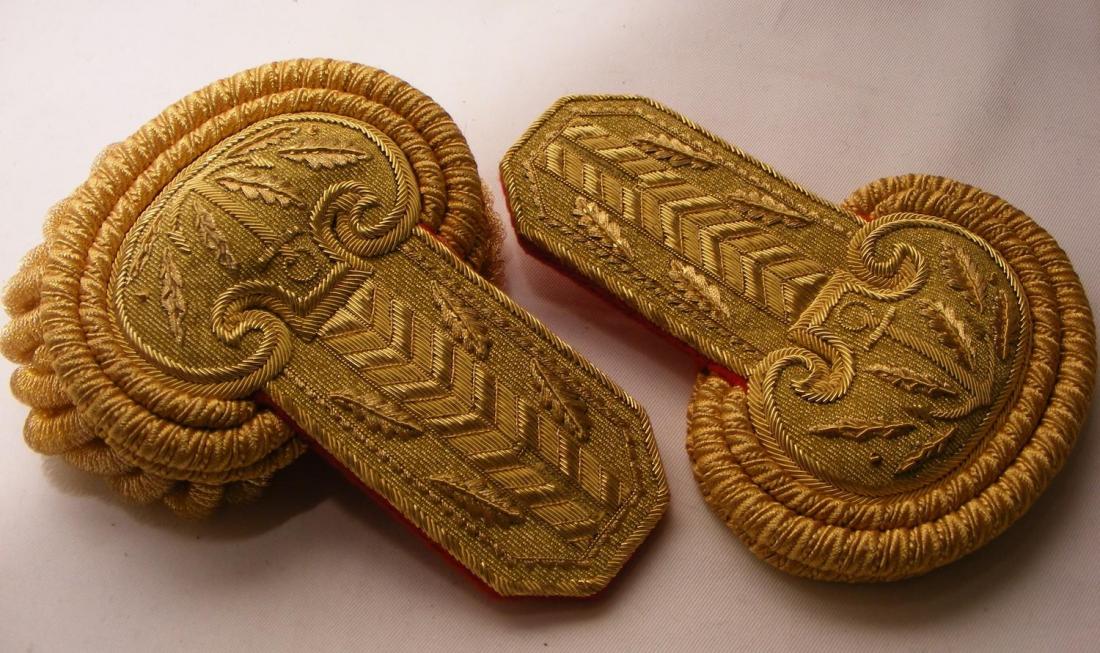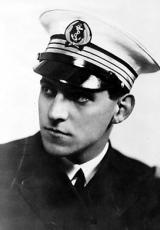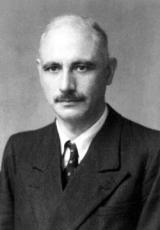The role of Navy officers in the Resistance (1940-1944)

It may be surprising, given the impressive number of studies on the Resistance that have been published over the last fifty years, but there are currently no studies concerning the role of French Navy officers in the interior Resistance between 1940 and 1944.
Just a few ”heroes”, the first of whom was naturally Honoré d'Estienne d'Orves, have been honoured by biographers. There are three main reasons for this. On the one hand, historians have not shown much interest in the subject, feeling that, other than a few rare exceptions, the Navy officers as a whole had supported the Vichy regime and approved its collaborationist policy.
Secondly, the institution itself has not encouraged investigation of the question. On this subject, it should be pointed out that all branches of the armed forces have since the end of the war felt a kind of ”malaise” about the clandestine fighters and rebels who made up the Resistance.
This twofold lack of interest - by academics and by the French Navy itself - is behind the misconception that sailors deserted the Resistance.
And yet, there were Navy officers who were resistance fighters, and more than one might believe. Not many of them joined the Resistance movements and networks before November 1942, but their number grew regularly starting in the spring of 1943.
Unfortunately for them - and this is the third reason why they remain unknown today - Navy officers in the interior resistance had a hard time existing and being recognised by their peers after the war, as they were stuck between the former ”Vichysts”, former ”Gaullists” and ”Barbary” sailors. At the time, the Resistance in the Navy was necessarily limited to the F.N.F.L., i.e. the external Resistance. Consequently, they were the ”forgotten ones” of a complex, poorly understood history.
Navy officers in the interior Resistance before November 1942
Before the Allied landing in North Africa on 8 November, and notably before the scuttling of the High Seas Fleet in Toulon on 27 November 1942, there were few Navy offices in the Resistance movements and networks. This relative discretion shows the influence of several factors: the culture of obedience dear to the military in general, the Pétainism and Maréchalism of the majority of the French officers of the time, the Navy's involvement in the Vichy regime under the influence of Admiral Darlan, the rise in Anglophobia after the attack at Mers el-Kebir (3-6 July 1940) and, lastly, anti-Gaullism following the Dakar affair (23-25 September 1940). Nonetheless, there were a few Navy officers, whether reservists or active, amongst the ”workers of the first hour”.
Here are three of the most notable figures:
Emmanuel d'Astier de la Vigerie (1900-1969). After graduating from the Naval Academy in 1918, the same year as the future Admiral Barjot, Emmanuel d'Astier de la Vigerie left the Navy in 1924 to go into journalism. Mobilised as a reservist in September 1939, he was discharged in the autumn of 1940 and soon thereafter founded one of the largest and most active movements in the southern zone, Libération Sud, alongside the Aubracs, Jean Cavaillès and André Philip. A member of the executive committee of the Unified Movements of the Resistance (M.U.R. - Mouvements Unis de Résistance) at the start of 1943, he became Commissioner for the Interior in the French National Liberation Committee (C.F.L.N. - Comité Français de Libération Nationale) in November of the same year. He left us his very interesting memoirs, published in 1947 under the title ”Sept Fois, Sept Jours” (”Seven Times, Seven Days”).
Henri Schaerrer (1916-1941). After joining the Navy in April 1939 as an aspiring reserve mechanics student, he embarked on the battleship Bretagne at the start of the war and then moved on to the destroyer Jaguar. Injured when this ship was torpedoed during the evacuation of Dunkirk in May 1940, he received an army corps citation. Discharged the following October, he immediately joined Georges Loustanau-Lacau's Alliance network. He quickly became one of its most effective agents (surveillance of the German submarine base at Bassens). ”He carried out unprecedented expeditions in terms of bravery and nerve”, Loustanau-Lacau said in his ”Mémoires d'un Français Rebelle” (”Memoirs of a French Rebel”). Arrested by the German police on 14 July 1941 near the demarcation line, west of Bordeaux, he was sentenced to death and executed at Mont-Valérien the following 13 November.
Jacques Trolley de Prévaux (1888-1944). Trolley de Prévaux was no doubt the most picturesque personality as well as the most endearing of the Navy officers in the interior Resistance before November 1942. He went to the Naval Academy in 1907 and was one of the most brilliant officers with the aeronautics certificate of his generation. A man of action, he was nonetheless a man of the world. He was a naval attaché in Berlin between 1927 and 1930. He was a ship captain in June 1940 when the armistice found him in Alexandria, where he was the captain of the cruiser Duguay-Trouin. Unlike some of his colleagues (Estienne d'Orves, Auboyneau, etc.), he did not join Free France after an agreement was signed between Admiral Godfroy and his British counterpart, Admiral Cunningham. He returned to France for health reasons at the beginning of 1941 and was named President of the First Permanent Maritime Tribunal in Toulon in July, before being placed on a leave of absence in December on the orders of Admiral Darlan, who was wary of this ”Gaullist” officer.
Dismissed from the Navy, he joined the Franco-Polish F.2 network at the beginning of 1942, first as a simple agent. In November 1942, he thought of going to London, but in the end decided to stay in France. Firstly, he felt that he would be of more use at home than in London. Secondly, his wife, a Jew of Polish origin and a resistance fighter along with him, was pregnant. In the spring of 1943, as he had just received the Distinguished Service Order from the British, he was appointed to head the Nice sector and thus became one of the main leaders of the network. He was arrested by the Gestapo in Marseille in March 1944. Jailed at Montluc Prison, he was executed at Bron on 19 August 1944. His wife, Lotka, met with the same fate. Promoted to the rank of Rear Admiral, he was posthumously made a Compagnon de la Libération.
This list is far from being complete. We chose only to mention three people who have remained mainly unknown from amongst all those who chose to take up arms against the occupant at an early date. Others, such as Philippon, Stosskopf, Boutron, Blot, etc., would also deserve mention.
Navy officers in the interior Resistance after November 1942
The Allied landing in North Africa on 8-10 November, the invasion of the Free Zone by the Germans and Italians on 11 November and, of course, the scuttling of the High Seas Fleet on the 27th of the same month, totally changed the politico-military situation and encouraged Navy offices to joint the interior Resistance.
For many of them, their pledge of loyalty to Maréchal Pétain had become null and void. Once the Armistice Navy (or what remained of it) was disbanded, the outlook for taking up the fight from within France and preparing for revenge with Pétain had faded. Under these conditions, all Navy officers who wanted to take up the struggle had to ask themselves one question: what should I do? Some decided to leave France and to go to North Africa via Spain.
Others stayed in France, joining the active resistance and going underground. Some of them are well known today. This is the case, for example, of Captain Louis Pothuau, Navy Lieutenant Pierre Ponchardier, Navy Lieutenant Edouard Rivière and, of course, Lieutenant Commander Henry de Pimodan. Others are less well known.
Here are a few of the lesser known figures:
Jacques du Garreau de la Méchénie (1904-1964). Jacques du Garreau de la Méchénie attended the Naval Academy starting in 1923 and was one of the best gunnery officers of his generation. Director of the main artillery on the battleship Richelieu during the Battle of Dakar (23-25 September 1940) against the English, he received an Order of the Navy citation and was promoted to Lieutenant Commander for ”acts of war”, in December 1940. Second in command of the destroyer Verdun, on 12 November 1942, he refused to defend Toulon against the Anglo-Americans and the French of North Africa in case of a landing by them. That same day, Captain Pothuau refused to swear that he would fight against the Allies and was relieved of his command by Admiral de Laborde, commander of the High Seas Fleet.
Placed on armistice leave in March 1943, Garreau de la Méchénie joined the Organisation de Résistance de l'Armée (O.R.A. - Resistance Organisation of the Army) in the spring and became the head of the Sisteron section. During the summer of 1944, with the group of 200 men he had set up, he harassed the German convoys going up the Route des Alpes. Commander du Garreau de la Méchénie returned to the Navy in September 1944.
Charles Bonnal (1908-1944). Grandson of General Bonnal, former chief of staff, Charles Bonnal went to the Naval Academy in 1929. With a diploma in transmissions, he was assigned to the transmissions service at the Maritime Prefecture of Toulon after the armistice. Then, during the summer of 1941, he was named second in command of the aviso-dragger Commandant Rivière, in Bizerte. That is where the Germans seized his ship on 8 December 1942. Back in France, he was put on armistice leave in April 1943, at which time, in Paris, he contacted the leaders of the Navy branch of the O.R.A., Commander Pothuau and Captain Pimodan. He set up an effective service smuggling people to North Africa through Spain. He was arrested by the Germans during an attempt to cross the border near Oloron on 14 July 1943. Imprisoned at Fort de Hâ, near Bordeaux, then in Compiègne, he was deported to Germany the following month. He was executed by firing squad in Lublin on 25 March 1944. His death was not announced until the spring of 1945, thanks to the daily newspaper, L'Humanité.
Jean Eynaud de Faÿ (1907-1992). Jean Eynaud du Faÿ attended the Naval Academy starting in 1926 and, like Bonnal, was a transmissions specialist. Head of the transmissions service on the cruiser Colbert when the armistice was signed, he was transferred to the Dupleix the following year. He was placed on armistice leave in the spring of 1943 after the fleet was scuttled, and moved to Angers, where he became secretary general of the Union Provinciale de la Corporation Paysanne (Provincial Union of the Peasantry). Like many of his colleagues on armistice leave, his new civilian job served as a cover for him as he joined the active Resistance. Indeed, in April 1943 he became the head of the Organisation Civile et Militaire (O.C.M. - Civilian and Military Organisation) for the Maine-et-Loire department and then, in November of the same year, department head of the O.R.A. under the field name Rousseau. In April 1944, he was named commander of the Forces Françaises de l'Intérieur (F.F.I. - French Forces of the Interior) for the Maine-et-Loire department (nearly 4,000 men). In August, his men became part of the 135th Infantry Regiment and played an active role in liberating Angers, Retz and Le Mans. Eynaud du Faÿ returned to the Navy the following month.



